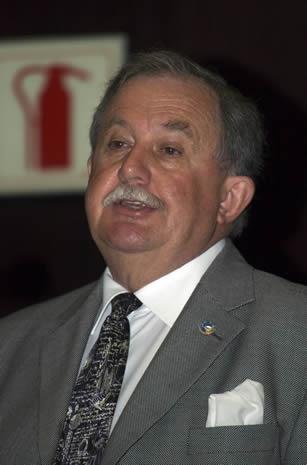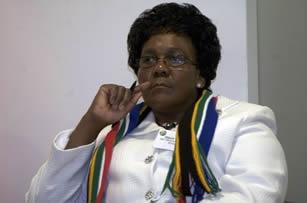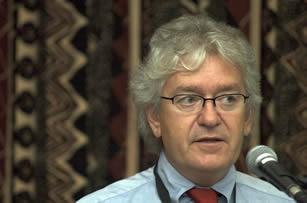Two important power and energy conferences coincided with South Africa’s government making some crucial policy decisions.
Two major conferences in February – the Power Indaba in Durban and the Energy 2010 event in Johannesburg – took place in the same week that the National Energy Regulator of South Africa (Nersa) announced the structure of new electricity tariffs that Eskom, the state-owned utility monopoly, would be imposing over the next three years. Although the announcement indicated price rises below what what Eskom was proposing and some observers were forecasting, they were high enough to elicit howls of protest from both business and domestic customers – who had previously enjoyed some of the lowest electricity prices in the world – but had a very poor memory.
They might have remembered that two years ago South Africa received a clear but very unwelcome wake-up call when Eskom imposed a rolling series of power cuts. As South Africans came to terms with the lack of electricity supplies in early 2008, the country realised that a lack of investment in power generation in the past looked certain to impact future economic performance.
The cuts struck after a literal ‘spanner in the works’ meant that the country’s Koeberg nuclear power station’s output was curtailed. That sparked immediate debate as to how the country’s generating capacity could quickly be increased to meet future demand and, as importantly, how the new power plants that could guarantee this might be financed.
The new Eskom tariff is clearly designed to meet the funding needed for building new power stations, but what Nersa had to judge was a price level that could support the development of new generating capacity but stop short of arresting current economic growth or stoking inflation.
 As Brian Statham, chairman of the South African National Energy Association and one of two key international facilitators at the Energy 2010 conference points out: "Creating the correct energy pricing model in developing countries is a challenge because at one extreme you are faced with climate disaster, and at the other you are faced with social disaster. Higher prices encourage the efficient use of energy with less wastage and more investment in modern technologies. However, many of those who do not have access to energy cannot afford to adjust to skyrocketing prices. Emerging businesses, which are especially sensitive to input costs, are also affected and jobs are at risk."
As Brian Statham, chairman of the South African National Energy Association and one of two key international facilitators at the Energy 2010 conference points out: "Creating the correct energy pricing model in developing countries is a challenge because at one extreme you are faced with climate disaster, and at the other you are faced with social disaster. Higher prices encourage the efficient use of energy with less wastage and more investment in modern technologies. However, many of those who do not have access to energy cannot afford to adjust to skyrocketing prices. Emerging businesses, which are especially sensitive to input costs, are also affected and jobs are at risk."
Even if Nersa’s decision on Eskom’s tariff increases were well below the 35% that the utility had proposed, the ruling party’s allies, business groups and the public were swift in condemning the tariff increases that Nersa’s chairwoman Cecilia Khuzwayo announced – rises of 24.8 per cent from this month [April], 25.1 per cent in 2011 and 25.9 per cent in 2012.
"This is a catastrophic betrayal of the poor of our country who are bearing the brunt of the consequences of the pursuance of a neo-liberal economic regime," raged Malesela Maleka, a spokesperson for the South African Communist Party. The Congress of South African Trade Unions, meanwhile, threatened both strike action and protests, describing the increases as "totally unacceptable" while the South African Chamber of Commerce and Industry forecast that the higher prices could result in some 250,000 job losses and would contribute substantially to consumer price inflation.
However, low usage households (those using less than 50kWh a month) would actually receive a 10.59 per cent decrease in charges and even those homes using between 51kWh and 350kWh would see their bills fall by 5.2 per cent. But as South Africa’s Minister of Energy, Dipuo Peters, told the Power Indaba in Durban, the country just has to up its game and that requires investing in increased capacity. South Africa’s total installed capacity at over 40,000MW compares with China that is bringing on stream about 40,000MW of additional electricity generating capacity each year!
"They [the Chinese] are doing this to make sure that their economic growth continues to hover around double digit figures," the minister stated at the Power Indaba. "It is therefore inevitable that we have to plan ahead and ensure that we can use economies of scale and scope. We have to ensure we get the timing of these projects right and ensure that they come in at the right price. She also said it was important to maintain a proper balance between the demands of free basic electricity and charging high users the exact prices for which they provided them with electricity.
Her cabinet colleague, South Africa’s Public Enterprises Minister Barbara Hogan, who was also speaking at the Power Indaba, has since announced that power generation would soon be accessible to independent power producers (IPPs) and that Eskom could no longer be regarded as the country’s single energy provider. "We have to look to private-sector investment and independent power producers must come into play," she said.
Nevertheless, although Hogan said that an IPP framework is virtually in place for Eskom to buy in power, and reasonably generous feed–in tariffs from independent power stations have been announced, including for power from suppliers outside the country, government critics say that the delay in stipulating just who will pay for the power, given Eskom’s financial constraints, has created uncertainty amongst investors. Certainly, the 1,200MW Mmamabula coal-fired IPP, being developed by CIC Energy Corporation in Botswana with a view to supplying South Africa, appears to have been delayed due to the ambiguity of government intentions in this regard – and CIC subsequently sold a 70% stake to the Chinese miner, Golden Concord Holdings Ltd, last month [March].
Some analysts have suggested that Eskom will need to raise more than $50 billion to ensure the country has sufficient generating capacity to meet growing domestic demand, and that figure could rise to a staggering $1 trillion over the next 15 years. But which projects will South Africa select to meet the country’s so-called "generation gap" problem?
One issue facing the decision makers is the urgency of the problem, but there are also other considerations to be taken into account. Some believe the country is almost compelled to continue relying on its huge coal reserves – that already supply some 90 per cent of the current generating capacity’s feed stock – and build a new suite of coal-fired thermal power plants. Not only can these be developed relatively quickly, they would also continue to guarantee employment within the mining sector.
Already, South Africa has approached the World Bank for a $3.75 billion loan for Eskom to help the utility build the fourth largest coal-fired power plant in the world. This is the new dry-cooled coal-fired $11 billion Medupi power station being built by Eskom near Lephalale in Limpopo province, the first greenfield coal-fired power station to be built in South Africa in 20 years and with a turn key generating capacity of 4,764MW.
"The $3.75 billion loan was already factored into the funding plan as submitted to Nersa in the multi-year price determination application and is critical for South Africa and the region," Eskom’s finance director, Paul O’Flaherty, explains. The African Development Bank has already provided a $2.6 billion loan for Medupi and Eskom is believed to be considering selling a 49 per cent share of the 4,800MW Kusile power station to raise some $5 billion as well as executing an international bond issue. Government has also put in place a number of financial instruments to guarantee around $25 billion of Eskom’s existing debt.
What has not been confirmed, to the despair of environmentalist activists, is whether the Medupi power station will utilize carbon capture technologies, sometimes known as carbon sequestration. Essentially, this is a means of burying the greenhouse gas emissions associated with coal burning deep undergound in suitable geological features. The problem with carbon capture is that, as well as being a relatively untried technology it requires extensive and expensive geological surveys of potential emissions’ burial locations.
The non-coal options
It should also be noted that Aviva of France and the US’s Westinghouse corporation have been lobbying the South Africa government to take the nuclear option. But as most development finance institutions, including the World Bank, will not fund nuclear power projects, it falls to export credit guarantees to provide concessionary finance. Furthermore, there is a particularly vocal anti-nuclear lobby in South Africa that points out that nuclear power stations invariably come in late and over budget, the problems of the disposal of nuclear waste, and all the security issues regarding nuclear fuel transport to contend with.
In fact, South African scientists have developed its own world-leading technology in the nuclear field, the Pebble Bed Modular Reactor (PBMR). It is a public-private partnership between the country’s nuclear industry and government, into which government poured R7.2 billion between 2006 and 2010 to develop a demonstration unit and fuel plants. PBMR boasts low operating costs and safety characteristics that makes the common public fear regarding nuclear energy seemingly impossible – the meltdown scenario and a large release of radioactivity. In addition, PBMRs are relatively quick to build. Yet South Africa has, it would appear, pulled the plug on the project, cutting its budget to the bone, leading to the laying-off of 75 per cent of the staff, or 600 workers.
 Despite South Africa’s government’s apparent continuing reliance on coal-fired generation, it would be wrong to suggest that renewables are completely out of the picture. Minister Peters told the Power Indaba that South Africa wants to generate 10,000MW from renewable sources by 2013.
Despite South Africa’s government’s apparent continuing reliance on coal-fired generation, it would be wrong to suggest that renewables are completely out of the picture. Minister Peters told the Power Indaba that South Africa wants to generate 10,000MW from renewable sources by 2013.
South Africa has some of the best solar resources in the world and at the Department of Minerals and Energy (DME) Renewable Energy Summit in March 2009, the then Energy Minister revealed ambitious targets "for the period 2013 to 2018 renewable energy could be set in the range of six to 15 per cent of the current capacity". Undoubtedly, concentrated solar power (CSP), major arrays of photovoltaic and household solar devices will have a major part to play in this scenario.
Like most of Africa north of the Limpopo, renewable energy systems are seen as especially appropriate to South Africa. Recent initiatives, such as the mammoth $500 billion Desertec Project to the north of the continent, which intends to harness both wind and concentrated solar power to supply Europe via trans-Mediterranean transmission lines, demonstrate that there is no lack of ambition in this regard.
But as the two South African conferences (and the Energy 2010 associated exhibition in particular) confirmed, it is really the smaller micro and mini grid systems that offer Africa the greatest potential in the short term. Indeed, that was the conclusion of a recent World Bank research paper that debunked the conventional view of renewable energy costs.
Entitled The Economics of Renewable Energy Expansion in Rural Sub-Saharan Africa, authored by Uwe Deichmann, Craig Meisner, Siobhan Murray, and David Wheeler of the World Bank Development Research Group, it presents compelling evidence supporting the argument for decentralised renewable power in large regions of rural sub-Saharan Africa, contrary to the belief that renewables remain far too costly for large-scale application. These findings underscore the need for energy planners to pay closer attention to opportunities for renewable energy expansion now and not wait for decades into the future.
Using Ethiopia, Ghana and Kenya as case studies, the authors conducted an assessment of the comparative costs of power grid electricity provision and off-grid renewable power options across each country and found off grid renewable energy technologies to be the lowest cost option for many households in rural and remote areas.
The authors say that while production costs of renewable energy sources may be higher than fossil power, they can be a more cost effective alternative in many areas once local costs of production are compared to extending centralised grids. Wind and solar power, for example, can be exploited in decentralised units or mini grids and broadly distributed across rural areas, as can pico-hydro turbines in fast-running small rivers and streams presenting potential cost competition to current power grids whose incremental costs of electric service increases as the grid is extended to locations outside the densely populated areas where they are clustered and are able to amortize fixed costs over a greater number of consumers.
The study highlights the important role decentralised renewable energy can play in expanding energy access, and demonstrates that economic development can be reconciled with the need to reduce carbon emissions.
It was notable that the Power Indaba event – held at Durban’s imposing International Conference Centre, organized by Spintelligent and this year celebrating its 10th edition – had a renewable energy programme focus on wind energy. The ambassador of Denmark to South Africa, Dan E. Frederiksen described how his country had adopted wind energy as an integral element of the power mix. "Now almost 20% of Denmark’s electricity supply comes from wind power. And the ambition is to have as much as 50% of electricity supply to come from renewable sources by 2020."
 In addition, there were a number of presentations from industry specialists such as Andre Otto, project manager of SA Wind Energy, and Ari Liddell of UK based Wind Prospects outlining the business development aspects of building wind farms. Industry leaders like turbine manufacturers Vestas and Suzlon also put up spokespersons to speak in break-out sessions while Nersa’s renewable energy specialist Andile Gxasheka was also on hand to make a couple of presentations regarding the Refit announced in two tranches in 2009 and designed to get the country’s renewable energy projects moving by guaranteeing a market price.
In addition, there were a number of presentations from industry specialists such as Andre Otto, project manager of SA Wind Energy, and Ari Liddell of UK based Wind Prospects outlining the business development aspects of building wind farms. Industry leaders like turbine manufacturers Vestas and Suzlon also put up spokespersons to speak in break-out sessions while Nersa’s renewable energy specialist Andile Gxasheka was also on hand to make a couple of presentations regarding the Refit announced in two tranches in 2009 and designed to get the country’s renewable energy projects moving by guaranteeing a market price.
Given that the two conferences, both of which were attended by African Review – had a stated pan-African agenda and attracted speakers and delegates from across the continent, it was interesting to gauge the interest that renewables held for the participants.
Arguably, hydropower fits into the renewable category, and many power experts believe that with Africa only utilizing some 20 per cent of its hydropower potential, this offers considerable opportunities. But it was wind energy that dominated proceedings at the Durban conference. It seems that to date it has mainly been deployed at the northern end of Africa, in Egypt, a country that boasts some of the world’s biggest wind farms.
Yet South Africa has big plans for wind with government planning to install 400MW within three years. Today, there are just seven commercial-sized wind turbines turning in the country, three at Eskom’s Klipheuwel installation north of Cape Town and the four-turbine Darling wind farm. Yet, totaling all the proposed wind farms that South Africa has on the drawing board, you arrive at a figure of 5,000MW to be added to Eskom’s grid when, or if, built.
By contrast, Syenza’s Energy 2010 at the Sandton Convention Centre in Johannesburg’s northern suburb’s district, had a more diverse character. Certainly, Energy 2010’s exhibition – a far smaller affair than its Power Indaba counterpart – had a large number of Chinese small-scale solar manufacturers, including solar water heaters (South Africa wants a million homes equipped with solar water heaters within two years and provides grants to home owners), but there were also some other fascinating exhibitions. These included an interesting stove called the Imbawula Entsha, that burned ‘blue coal’ briquettes manufactured from coal waste; and there was a heat retaining cooking bag – one of Africa’s first ‘programmatic’ Clean Development Mechanism projects – that through the bag’s fuel saving properties has clear socio-economic benefits.
Another company, African Renewable Energies Ltd, was promoting a flexible photovoltaic membrane covering that, combined with a methane collection system, is designed to cover urban landfill sites and rubbish sites. This covering prevents harmful leachates polluting water tables, cuts rodent infestation, denies the mosquito breeding sites and, to top it all, produces methane for energy.
It was clear from the two conferences that Africa is on the move towards a cleaner, sustainable energy future and South Africa, appropriately as the continent’s leading economy, is leading the way. The days of cheap power from South Africa’s massive coal reserves, which has delayed so much essential investments in the Southern African Development Community’s electricity sector, are just recent history, and as South Africa’s power generating surplus dries up the race is on for both the country and its continental neighbours to acquire better and cleaner generating capacity.
Stephen Williams




















